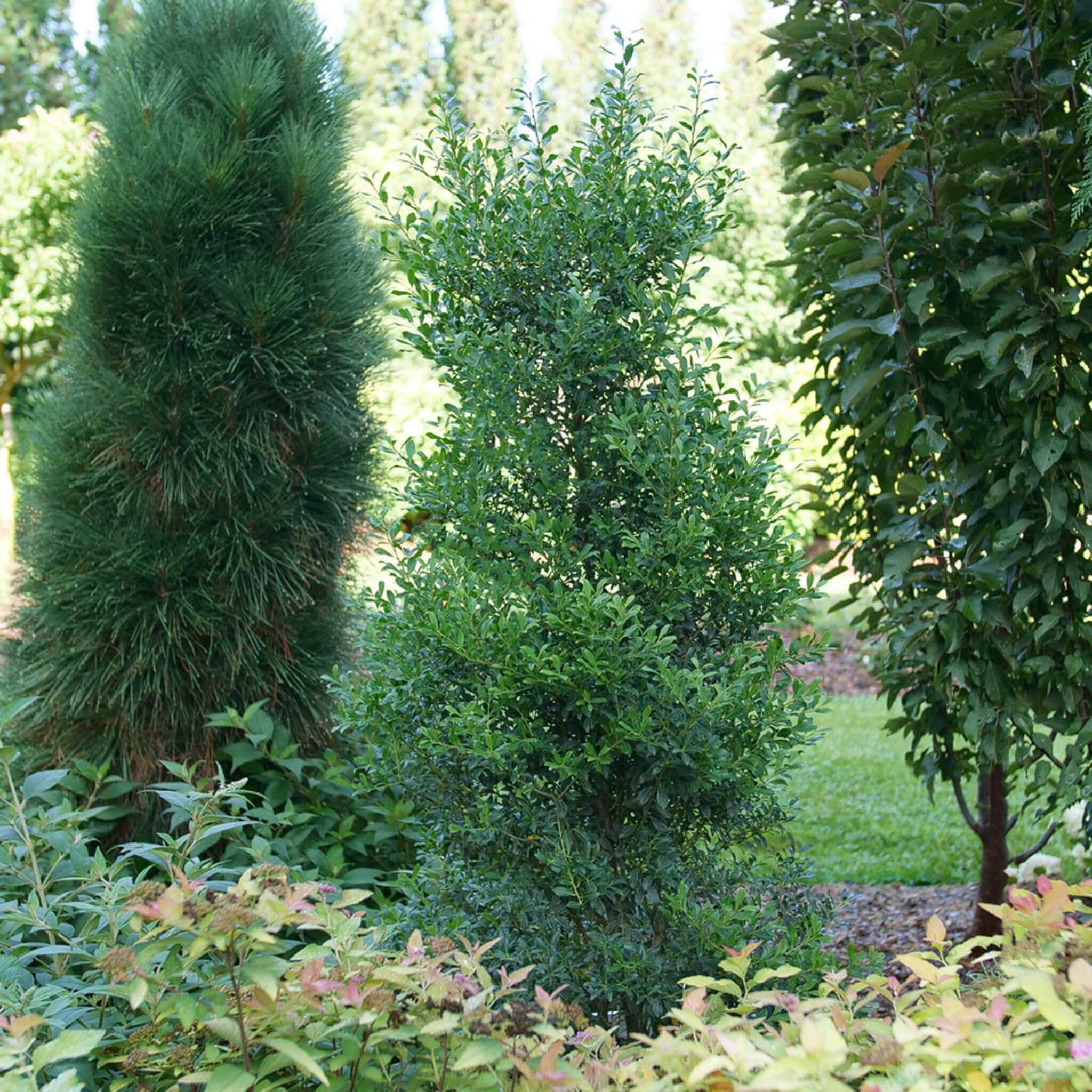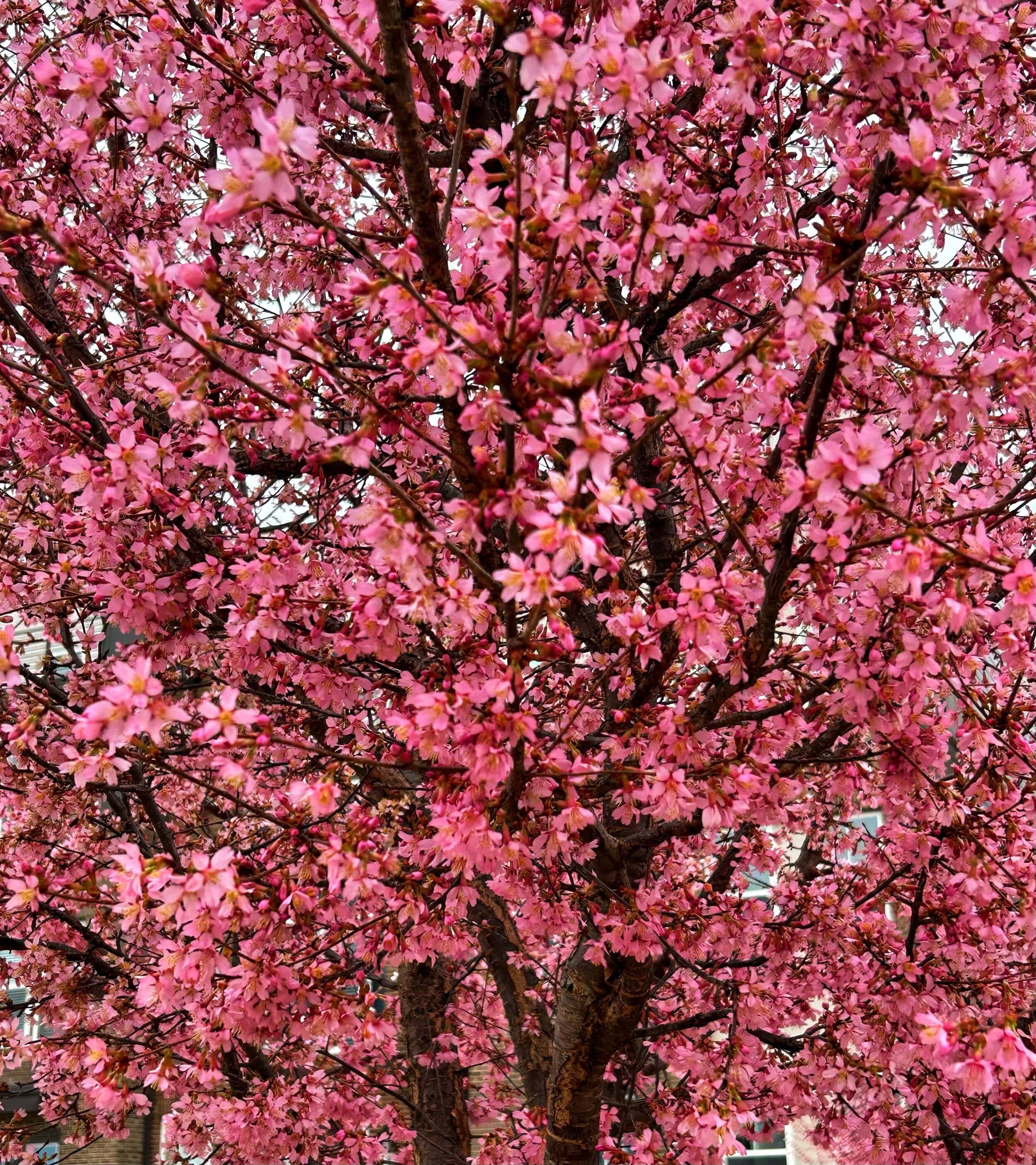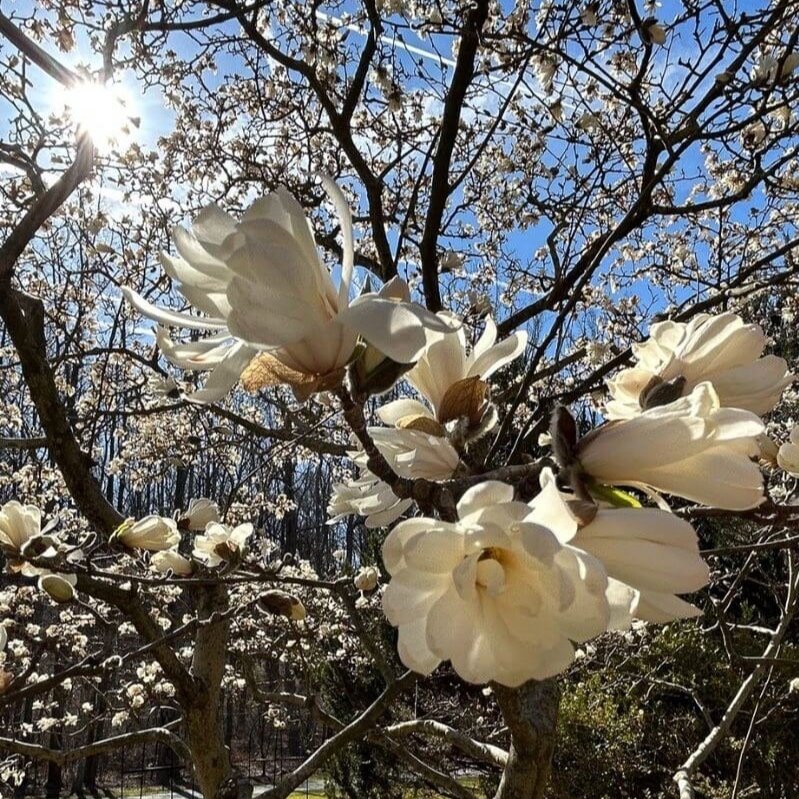Star Magnolia: A Spring Glow Up for Small Yards
The Perfect Tree for Small Backyard Landscaping
Bring spring joy to your yard with this small magnolia tree.
Star magnolia (Magnolia stellata) is a slow-growing, deciduous magnolia tree with delicate, star-shaped flowers opening in early spring. It is grown as a multi-trunked shrub or small tree, with a rounded crown and open branching habit, in zones 4-9.
Unlike many other species of magnolia that can take up to 10 years to start producing blooms, star magnolias begin to flower starting at the age of 2-3. Fuzzy, soft buds give way to lightly fragrant and delicate blooms lasting for 2-3 weeks.
Seed pods begin to form in summer and by autumn are bursting with orange fruit, eagerly eaten by birds, squirrels and other wildlife.
The small star magnolia tree is a great choice for planting close to buildings and in small backyard landscaping.
Star magnolia flowers are susceptible to wind and frost damage in the spring time. Plant in a sheltered spot with plenty of sun and moist, organically rich soil. Star magnolias will take some light shade, but the best flowering show occurs in full sun.
Magnolias do not like periods of drought - be sure to keep the soil consistently moist, and water newly planted trees deeply and thoroughly. (Are you in a drought? Check out the U.S. Drought Monitor). These trees have little need for pruning, other than dead and damages branches, and are relatively unbothered by disease or pests.
The star magnolia is not a favorite of deer and they tend to leave it alone but remember, deer will eat anything when they are hungry enough and sadly, no plant is fully deer proof!
Bucks may damage young trees in fall by rubbing their antlers on the bark, so consider protecting young trees with fencing or tree guards until they gain enough size and sturdiness to withstand some nibbling.
Plant star magnolia as a specimen tree, along a pathway or near a window. Its unique form and early spring blooms make it an eye-catching focal point.
Star magnolia is ideal for small backyard landscaping. Make sure to choose its spot wisely and keep it sheltered from drying winds.
Use in a foundation planting or border, with low-growing perennials like phlox planted underneath. Plant a star magnolia along a woodland’s edge, to soften the transition from lawn to forest. Or combine with other evergreens, shrubs, and small trees to create a mixed privacy border.
If you would like to grow a deciduous magnolia, but are worried about the potential loss of blooms due to frost damage, consider planting a Little Girl Magnolia instead. The Little Girl magnolias are a group of magnolia trees specifically bred to avoid frost damage.
Star magnolia flowers open early and can be damaged by freezing temperatures and wind - plant in a sheltered spot.
The small star magnolia tree (Magnolia stellata) flowers best in full sun.
How to Plant and Grow Star Magnolia
Location: Choose a sheltered location, away from drying winds, with organically rich, well-drained soil and full sunlight (6+ hours of direct sun per day). Amending the soil with organic matter (like compost or Leafgro®) will greatly improve drainage and fertility.
Planting: Plant this small compact flowering tree in the spring or fall, allowing the roots to establish before the onset of extreme hot or cold weather. Water the tree deeply after planting.
Watering: Provide regular watering, especially during dry spells, to keep the soil consistently moist but not waterlogged. Water at the base of the tree to avoid wetting the foliage. To promote optimal growth and flowering, consistent moisture is best for a star magnolia. For more information on watering, see “How to Water a Tree'“.
Mulching: Apply a layer of mulch around the base of the tree to help retain moisture, suppress weeds, and regulate soil temperature.
Fertilizing: Star magnolias are light feeders, preferring a balanced tree and shrub fertilizer applied once a year in early spring. Over-fertilization can cause disease and insect problems.
Pruning: Star magnolias require minimal pruning. If needed, shape lightly and prune out dead branches in the spring, immediately after flowering has finished.
This article contains affiliate links, which means I may earn a small commission at no extra cost to you. These commissions help me to continue bringing you free, high-quality design articles. Thank you for your support!
Star Magnolia Cultivars
Centennial (Magnolia stellata ‘Centennial’): Fragrant, pure white flowers with a slight pink tinge on the outside. Grows 15-20 feet tall and wide with a broad, pyramidal shape.
Centennial Blush (Magnolia stellata ‘Centennial Blush’): Pale pink spring flowers cover this prolific bloomer early in the season. Grows 12-18 feet tall with a spread of 10-15 feet, and takes on an upright, oval shape.
Jane Platt (Magnolia stellata ‘Jane Platt’): Light pink flowers on a rounded, conical-shaped shrub. Grows 10-20 feet high.
Kikuzaki (Magnolia stellata ‘Kikuzaki’): A dwarf cultivar with a compact habit, growing 10-12 feet tall and 6-10 feet wide. Profuse light pink to white flowers; blooms earlier than the species.
Pink Stardust (Magnolia stellata ‘Pink Stardust’): Fragrant pink flowers and a faster growth rate than the species. This small compact flowering tree can be expected to grow 15 feet high and 10 feet wide.
Rosea (Magnolia stellata ‘Rosea’): Deep pink spring flower buds open to reveal pink flowers that fade to white. Grows 12-25 feet tall.
Royal Star (Magnolia stellata ‘Royal Star’): A popular, widely available cultivar, with pink buds opening to reveal large white flowers. Grows 10-20 feet tall and 10-15 feet wide.
Scented Silver (Magnolia stellata ‘Scented Silver’): Outstandingly fragrant white flowers, grows tall and narrow to 15 feet high.
Waterlily (Magnolia stellata ‘Waterlily’): Highly fragrant, rich pink flowers gradually fade to white. Late flowering and slightly less susceptible to frost damage; grows 10-20 feet tall and 8-15 feet wide.
A star magnolia flower unfurls in spring.
Does the Star Magnolia Tree Have Invasive Roots?
All magnolia trees have shallow, complex, flexible root systems with a wider spread than most other trees. Many people automatically assume these shallow, spreading roots will cause damage to sidewalks, foundations and pipes; however, this is rarely the case!
Because of their flexibility, magnolia roots actually have a low root damage potential. This low damage potential means that roots are unlikely to cause direct damage to foundations, pipes, and sidewalks.
As with all trees and shrubs, it is possible that over time small roots can invade cracks that are already present. Trees should never be planted too close to a house or building.
Keep in mind that most varieties of the star magnolia will eventually grow anywhere from 10 - 20 feet wide and should be planted at least 5+ feet away from the house, depending on the mature size of the variety you have chosen.
What Is Wrong With My Star Magnolia Tree?
Star magnolias are a stunning, low-maintenance choice for any landscape, and they generally face few issues with pests or diseases. However, occasional problems can arise—here are a few things to keep an eye on:
Frost damage: Since they bloom in late winter or early spring, frost may cause damage to the buds or flowers of a star magnolia tree. After a freeze, you may notice mushy brown or blackened buds and flowers that fail to fully develop. Leaves may curl up and turn dark brown, black or purple. This does not cause long-term harm to the tree, but the flowering show may be over for the year.
Magnolia scale: Star magnolias can develop an infestation of small, oval-shaped insects called scale. These scale insects excrete honeydew, a sticky substance that attracts ants and promotes the growth of sooty mold, a charcoal-black colored fungus that coats everything in the vicinity. If you notice a scale infestation on your star magnolia tree, contact an ISA certified arborist for treatment.
Chlorosis: Chlorosis occurs when a tree is lacking in key nutrients like iron or manganese. A star magnolia suffering from chlorosis will develop yellow leaves with green veins and have poor, stunted growth. Chlorosis is rarely fatal and can be treated by a trained arborist - visit TreesAreGood.org to find a certified professional near you.
Find a Tree for Your Landscape:























Create a Winter Wonderland with This Unique Small Tree